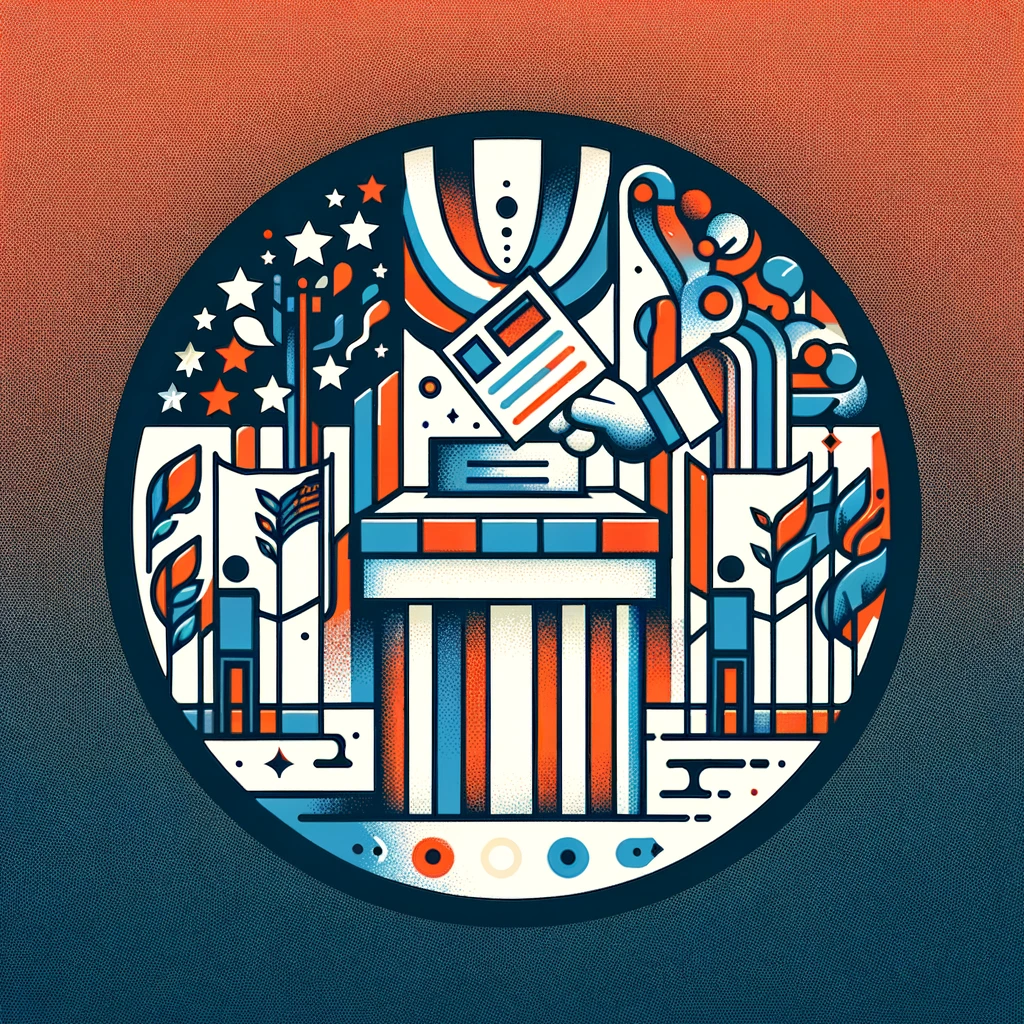This article delves into the groundbreaking use of Meta’s expanded labelling system, which has revealed the alarming presence of AI-generated imagery during elections. This revelation shines a light on the potential for misinformation and manipulation that can disrupt the democratic process.
In recent years, the rise of AI-generated imagery has become increasingly prevalent in election campaigns. This powerful technology has the ability to create highly realistic visuals that can deceive and sway public perception. As a result, trust in the democratic process can be eroded, and the consequences for society can be far-reaching.
Meta’s labelling system has emerged as a crucial tool in combating the spread of AI-generated imagery. Through sophisticated algorithms and techniques, this system can identify and label manipulated visuals created by AI algorithms. By doing so, it provides a means to expose the potential misuse of technology in election campaigns.
The identification of deepfakes and synthetic media has become a key focus for Meta’s labelling system. These manipulative techniques involve the use of AI algorithms to alter or fabricate videos, images, or audio, making it difficult to discern between what is real and what is not. By detecting and flagging such content, Meta’s labelling system helps to mitigate the risks of misinformation and deception.
Advancements in detection technology have played a crucial role in enhancing the capabilities of Meta’s labelling system. AI-powered tools can now analyze minute details and patterns within visuals, enabling the identification of AI-generated imagery with greater accuracy. These advancements hold tremendous potential in combating election-related misinformation and ensuring the integrity of democratic processes.
The implications of AI-generated imagery for democracy are significant. The ability to manipulate visuals can influence public opinion, sway election outcomes, and erode trust in democratic institutions. It is vital to address these challenges to safeguard the integrity of elections and uphold the principles of transparency and accountability.
Efforts to address the challenges posed by AI-generated imagery require a multi-faceted approach. Tech companies, policymakers, and society at large must collaborate to implement regulatory measures that prevent the misuse of AI-generated imagery in election campaigns. Transparency and accountability are paramount in maintaining the trust of the public.
Furthermore, media literacy and education play a crucial role in equipping individuals with the skills to critically evaluate and discern AI-generated imagery. By promoting media literacy, individuals can become more adept at identifying manipulated visuals and understanding the potential impact they can have on democratic processes.
In conclusion, Meta’s expanded labelling system has exposed the presence of AI-generated imagery during elections, shedding light on the potential for misinformation and manipulation. Through the identification of manipulated visuals and the advancements in detection technology, there is hope for addressing the challenges posed by AI-generated imagery and safeguarding the integrity of elections.
The Rise of AI-Generated Imagery
The rise of AI-generated imagery is transforming the landscape of election campaigns and raising important questions about the impact on public perception and trust in the democratic process. With advancements in artificial intelligence, it has become increasingly easier to create convincing and realistic images and videos that can be used to manipulate and mislead voters.
AI-generated imagery refers to visuals that are created or altered using artificial intelligence algorithms. These algorithms can generate lifelike images of individuals who do not exist or manipulate existing images to create false narratives. This technology has the potential to be used for both legitimate and malicious purposes, making it crucial to develop effective methods to identify and combat misinformation.
- AI-generated imagery poses a significant challenge to the detection and prevention of misinformation during elections.
- It can be used to create deepfakes, which are manipulated videos that make it appear as though someone is saying or doing something they did not.
- These deepfakes can be used to spread false information, manipulate public opinion, and undermine the integrity of the electoral process.
As AI technology continues to advance, it is essential for tech companies, policymakers, and society as a whole to address the challenges posed by AI-generated imagery. This includes developing robust detection and verification methods, implementing regulatory measures, and promoting media literacy and education to equip individuals with the skills to critically evaluate and discern AI-generated content during elections.
Meta’s Labelling System
Meta’s labelling system is a crucial tool in the fight against AI-generated imagery during elections. With the increasing prevalence of manipulated visuals in political content, it is essential to have a robust system in place to identify and label such content accurately. Meta’s expanded labelling system utilizes advanced algorithms and techniques to detect AI-generated imagery and provide transparency to users.
The labelling system works by analyzing various markers and patterns that are indicative of AI manipulation. By examining the metadata, pixel-level analysis, and other factors, Meta’s algorithms can identify potential deepfakes and synthetic media. This helps in distinguishing between genuine content and manipulated visuals, ensuring that users are aware of the authenticity of the information they consume.
Meta’s labelling system goes beyond simple detection and labeling. It also aims to educate users about the presence of AI-generated imagery and the potential implications it may have on the democratic process. By providing clear and concise labels, Meta empowers users to make informed decisions and critically evaluate the content they encounter during elections.
In addition to the labelling system, Meta continues to invest in advancements in AI technology for improved detection and verification of AI-generated imagery. By staying at the forefront of technological developments, Meta strives to combat election-related misinformation and safeguard the integrity of democratic processes.
Identifying Manipulated Visuals
The ability to identify manipulated visuals created by AI algorithms is crucial in combating misinformation during elections. Meta’s expanded labelling system plays a significant role in this process, employing advanced algorithms and techniques to detect AI-generated imagery in political content.
Meta’s labelling system utilizes specific markers and patterns to identify manipulated visuals. These markers include inconsistencies in lighting, shadows, and reflections, as well as unnatural facial expressions or movements. By analyzing these visual cues, Meta’s algorithms can accurately distinguish between authentic and AI-generated imagery.
In addition to these visual markers, Meta’s labelling system also takes into account contextual factors such as the source of the content and its dissemination patterns. This comprehensive approach helps in identifying instances where AI-generated imagery is used to spread misinformation or manipulate public perception.
To further enhance its detection capabilities, Meta continuously updates its labelling system to adapt to evolving AI technologies. This includes incorporating machine learning algorithms that can learn from new examples of AI-generated imagery, allowing for more accurate and efficient identification.
By effectively identifying manipulated visuals, Meta’s expanded labelling system contributes to maintaining the integrity of elections and safeguarding democratic processes. It enables users to make informed decisions by distinguishing between authentic and AI-generated content, reducing the potential for misinformation to influence public opinion.
Ultimately, the identification of manipulated visuals is a crucial step in addressing the challenges posed by AI-generated imagery during elections. Through the use of advanced algorithms and continuous updates, Meta’s labelling system helps to ensure transparency and accountability in the digital landscape, promoting a more trustworthy and informed democratic process.
Deepfakes and Synthetic Media
The rise of deepfakes and synthetic media has introduced new challenges in the realm of election campaigns and the detection of AI-generated imagery. Deepfakes refer to manipulated videos or images that use AI algorithms to convincingly replace a person’s face with someone else’s, creating a highly realistic and often misleading representation. These manipulated visuals can be used to spread false information, manipulate public opinion, and undermine the integrity of elections.
With the advancements in AI technology, creating deepfakes has become increasingly accessible, raising concerns about their potential impact on democratic processes. Deepfakes have the ability to deceive viewers by presenting them with seemingly authentic content, making it difficult to discern between what is real and what is fabricated.
To combat the spread of deepfakes and synthetic media during election campaigns, Meta’s expanded labelling system plays a crucial role. The algorithms and techniques employed by Meta help identify and flag AI-generated imagery, providing users with a better understanding of the authenticity of the content they encounter. By labeling such content, Meta aims to enhance transparency and empower individuals to make informed decisions.
However, the detection and prevention of deepfakes remain an ongoing challenge. As AI technology continues to evolve, so too do the capabilities of those creating deepfakes. This necessitates the constant improvement of detection technology to stay one step ahead of those seeking to manipulate public perception.
Ultimately, addressing the issue of deepfakes and synthetic media requires a collaborative effort from tech companies, policymakers, and society as a whole. By implementing regulatory measures, promoting media literacy and education, and fostering a culture of critical thinking, we can mitigate the potential harm caused by AI-generated imagery and safeguard the integrity of elections.
Advancements in Detection Technology
Advancements in detection technology have played a crucial role in combating the spread of AI-generated imagery during election campaigns. With the increasing sophistication of AI algorithms, it has become imperative to develop innovative tools and techniques to detect and verify manipulated visuals.
One notable advancement is the use of machine learning algorithms that analyze patterns and markers in images to identify potential deepfakes and synthetic media. These algorithms can detect subtle inconsistencies in facial expressions, lighting, and shadows, which are often telltale signs of AI-generated imagery.
Additionally, advancements in image forensics have enabled experts to analyze the metadata and digital footprints of images to determine their authenticity. This involves examining the unique characteristics of the image file, such as the camera model, date and time of capture, and any modifications made to the image.
Furthermore, researchers have developed algorithms that can detect deepfake artifacts, such as unnatural eye movements or distortions around the face. These algorithms leverage the power of neural networks to compare the visual features of an image against a vast database of known deepfakes, enabling rapid identification.
The combination of these advancements in detection technology holds great promise in the fight against AI-generated imagery. By staying at the forefront of technological innovation, tech companies and researchers can continuously improve their detection methods and stay one step ahead of those seeking to exploit AI for malicious purposes.
Implications for Democracy
The implications of AI-generated imagery for democracy are vast and far-reaching. With the ability to create realistic and convincing visuals, AI algorithms have the potential to sway public opinion, erode trust in the democratic process, and undermine the integrity of elections.
One of the main concerns is the manipulation of political content. AI-generated imagery can be used to create deepfakes and synthetic media, which are increasingly difficult to detect and debunk. These manipulated visuals can be shared on social media platforms and spread rapidly, leading to the dissemination of false information and the distortion of political discourse.
Furthermore, AI-generated imagery can be used to target specific demographics and amplify existing biases and divisions within society. By creating visuals that cater to individuals’ preconceived notions and beliefs, AI algorithms can reinforce echo chambers and hinder the exchange of diverse perspectives.
Another implication is the erosion of trust in the democratic process. If the public becomes aware of the prevalence of AI-generated imagery in election campaigns, it may lead to skepticism and doubt regarding the authenticity of political content. This can undermine the legitimacy of elected officials and institutions, casting doubt on the fairness and transparency of the electoral process.
Moreover, AI-generated imagery has the potential to influence the outcome of elections. By manipulating visuals and creating persuasive narratives, political actors can sway public opinion in their favor. This raises concerns about the fairness and integrity of elections, as well as the ability of voters to make informed decisions based on accurate information.
To address these implications, it is crucial for tech companies, policymakers, and society at large to take action. Regulatory measures can be implemented to prevent the misuse of AI-generated imagery in election campaigns. Transparency and accountability should be prioritized, ensuring that the source and authenticity of visuals are clearly identified and disclosed.
Additionally, media literacy and education play a vital role in equipping individuals with the skills to critically evaluate and discern AI-generated imagery during elections. By promoting media literacy programs and providing resources for individuals to understand the techniques and potential pitfalls of AI-generated visuals, society can become more resilient to manipulation and misinformation.
In conclusion, the implications of AI-generated imagery for democracy are significant. It is essential to recognize the potential risks and challenges posed by these technologies and take proactive measures to safeguard the integrity of elections and protect the democratic process.
Addressing the Challenges
The challenges posed by AI-generated imagery in election campaigns require comprehensive and collaborative efforts from tech companies, policymakers, and society as a whole. Addressing these challenges is crucial to safeguarding the integrity of elections and ensuring a fair democratic process.
One key aspect of addressing these challenges is the implementation of regulatory measures. By establishing clear guidelines and regulations, tech companies can be held accountable for preventing the misuse of AI-generated imagery in election campaigns. Transparency and accountability are essential in building trust and maintaining the integrity of the democratic process.
Furthermore, media literacy and education play a vital role in equipping individuals with the necessary skills to critically evaluate and discern AI-generated imagery during elections. By promoting media literacy programs and providing education on the potential risks and implications of AI-generated imagery, voters can make informed decisions and avoid falling victim to misinformation.
Collaboration between tech companies, policymakers, and educational institutions is crucial in addressing the challenges posed by AI-generated imagery. By working together, we can develop effective strategies and solutions to combat the spread of misinformation and ensure the integrity of elections.
Regulatory Measures
Regulatory measures play a crucial role in addressing the challenges posed by AI-generated imagery in election campaigns. These measures are essential to prevent the misuse of such technology and ensure transparency and accountability in the democratic process.
One potential regulatory measure is the implementation of strict guidelines and regulations for political advertising. Tech companies and social media platforms can establish clear policies regarding the use of AI-generated imagery in political content. These policies can include requirements for disclosure and labelling of AI-generated visuals, ensuring that users are aware of the presence of manipulated media.
Furthermore, regulatory bodies can collaborate with technology companies to develop advanced detection systems that can identify AI-generated imagery more effectively. This can involve the use of machine learning algorithms and artificial intelligence to detect patterns and markers indicative of manipulated visuals. By continuously updating and improving these detection systems, the spread of misinformation through AI-generated imagery can be minimized.
Additionally, regulatory measures can also focus on holding individuals and organizations accountable for the creation and dissemination of AI-generated imagery with malicious intent. This can involve legal consequences for those found guilty of using AI-generated visuals to manipulate public opinion during elections.
In order to ensure the effectiveness of regulatory measures, collaboration between tech companies, policymakers, and society at large is crucial. By working together, it is possible to create a regulatory framework that safeguards the integrity of elections and mitigates the risks associated with AI-generated imagery.
Media Literacy and Education
Media literacy and education play a crucial role in equipping individuals with the necessary skills to critically evaluate and discern AI-generated imagery during elections. In an era where misinformation and manipulation can easily spread, it is essential for citizens to be well-informed and equipped to navigate the digital landscape.
One way to promote media literacy is through educational initiatives that teach individuals how to identify and verify AI-generated imagery. These initiatives can include workshops, online courses, and educational resources that provide practical tips and techniques for distinguishing between real and manipulated visuals.
Furthermore, media literacy programs can also focus on cultivating critical thinking skills and promoting a healthy skepticism towards information encountered online. By encouraging individuals to question the source, context, and motives behind the content they consume, media literacy initiatives can empower citizens to make informed decisions and resist the influence of AI-generated imagery.
In addition to educational efforts, collaboration between tech companies, policymakers, and society at large is crucial in addressing the challenges posed by AI-generated imagery. This collaboration can involve the development of industry standards and guidelines for the responsible use of AI technology in election campaigns, as well as the implementation of regulatory measures to prevent the misuse of AI-generated imagery.
By prioritizing media literacy and education, we can foster a more informed and discerning electorate, capable of navigating the complexities of AI-generated imagery and safeguarding the integrity of elections.






